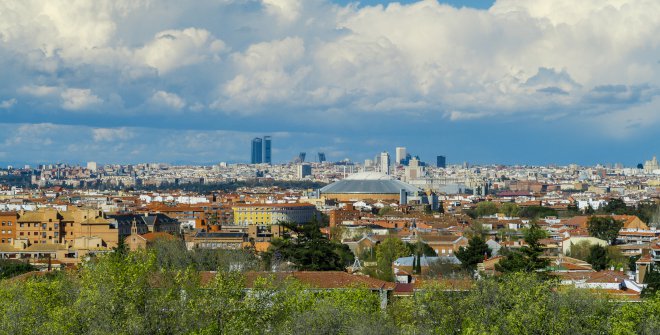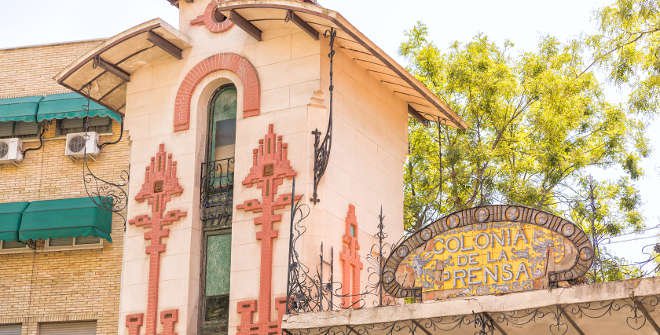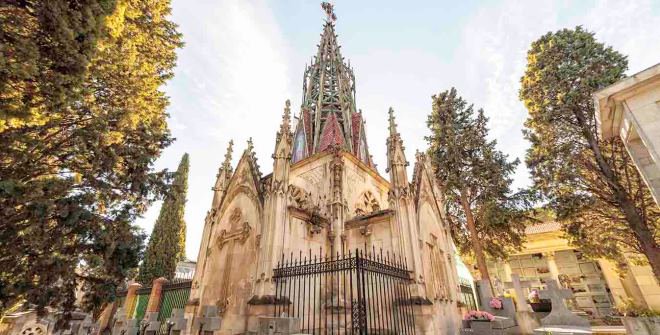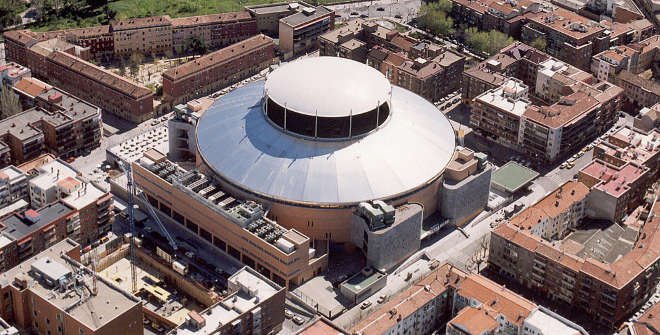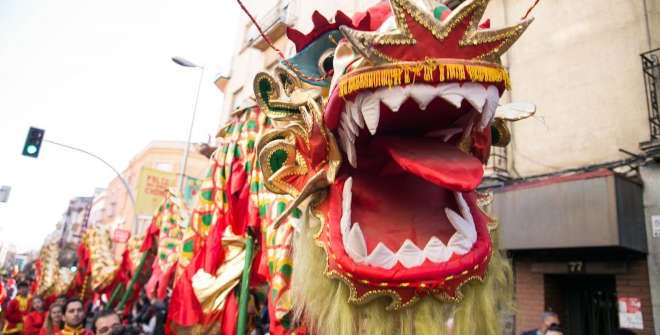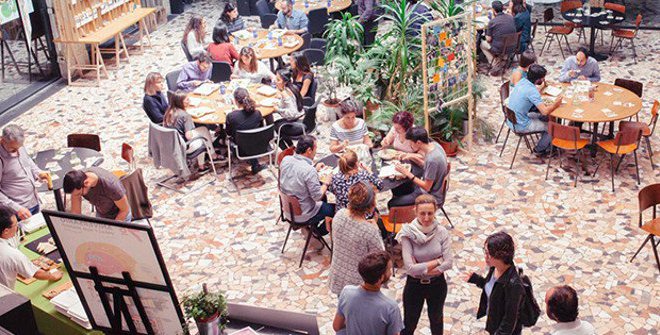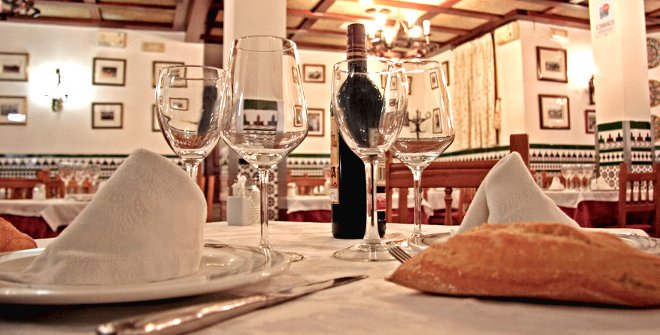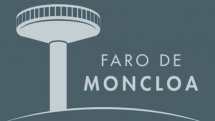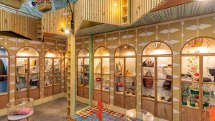Discovering Carabanchel
If you want to move away from the city centre and discover an area of the city that is not so well known, don't miss out on this district which many call “Madrid’s Soho”. Carabanchel has become the centre of a large creative and bohemian movement that now boasts more than 130 artists in studios and workshops. It also has bars and restaurants where the most traditional tapas can be savoured, along with architectural gems.
First of all, where is it? Carabanchel is the 11th of the 21 districts that make up the municipality of Madrid. It is located in the south of the city, bordered by the River Manzanares and the district of Arganzuela to the north; the town of Leganés to the south; the Usera district to the east; and the Latina district to the west.
It was formerly known as “the Carabancheles” thanks to its two original municipalities: Carabanchel Alto (Upper Carabanchel), because it was perched on a small hill; and Carabanchel Bajo (Lower Carabanchel), which was closer to the municipality of Madrid. They were both annexed to Madrid in 1948, although Carabanchel was reduced in size following the 1971 restructuring of the districts, creating today’s Latina, Carabanchel and Usera districts from its former area.
It is made up of the neighbourhoods of Comillas, Opañel, San Isidro, Vista Alegre, Puerta Bonita, Buenavista and Abrantes, whereby the most populated is Vista Alegre with almost 50,000 inhabitants. In 2018, it registered a population of 243,959 inhabitants, making it the most populated district in Madrid.
How to get there from the centre of Madrid
There are several ways to get to Carabanchel from the centre of Madrid. The main way is by Metro de Madrid, on Line 5: Alameda de Osuna – Casa de Campo which passes through the stations of Vista Alegre, Oporto, Urgel, Marqués de Vadillo and the main station, Carabanchel, located under the Glorieta del Ejército, in the neighbourhood of Vista Alegre in the district of the same name. Line 5 of the metro also connects with the C10 Renfe Suburban network, at Pirámides train station.
The district is also connected to several urban and interurban lines and two intermodal bus and metro interchanges: the Oporto interchange above ground and the Plaza Elíptica underground interchange. Several bus lines connect Madrid with Leganés, Getafe and Parla, along with Metro lines 6 and 11.
It is also well connected to Madrid's two main ring roads: the M-30, currently known as Calle 30 since it went underground, and the M-40, as well as the Toledo A-42, which road ends at Plaza Elíptica.
Architectural gems
This district is home to several architectural gems that must be visited. In the heart of the Vista Alegre neighbourhood, Finca de Vista Alegre stands out, a monumental and landscape ensemble, whose gardens were declared a Site of Cultural Interest; along with the Vistalegre Arena Palace, a large multi-purpose building that regularly hosts musical and sporting events. The latter has a sculptural ensemble of two bulls on the south entrance staircase, which is the only image linked to the palace’s age-old bullfighting spirit, which has been occupied by the popular Vista Alegre bullring, known as ‘La Chata’, since 1908.
On the other hand, the striking building known as Carabanchel 17 stands in the Ensanche of Carabanchel. Designed by ACM architects, its homes are reminiscent of the containers of goods stacked in a port. Casa de Bambú designed by the architects, Alejandro Zaera and Farshid Moussavi, and named after its bamboo cladding, which resembles a mobile lattice or screen that can be moved along the façade, is located in Calle Clarinetes.
Another place not to be missed is La Colonia de la Prensa, one of the remaining examples of Modernist architecture in Madrid. With the main entrance at Numbers 61 and 63 Calle Eugenia de Montijo, it was created in around 1910 for writers and journalists of the ‘Los Cincuenta’ group in order to develop the land between Lower Carabanchel and Upper Carabanchel.

Did you know that the oldest building in Madrid can be found in Carabanchel? Namely, the Hermitage of Santa María La Antigua, the oldest Mudejar temple in the Community of Madrid, as well as the only hermitage of this style that has been fully conserved. It is a Romanesque-Mudejar relic unknown to many residents of Madrid.
The San Isidro Hermitage, a simple temple where the patron saint of Madrid is worshipped is very close to the River Manzanares. It was built on the very spot where, according to tradition, San Isidro miraculously made water flow to quench the thirst of his master, Ivan de Vargas, when he hit his stick against a rock on a hot summer afternoon. San Isidro Sacramental Cemetery, the oldest cemetery preserved in Madrid and one of the most important architectural ensembles in Spain and one of the most beautiful in Europe stands alongside the hermitage. Declared a Site of Cultural Interest, it is open to the public and offers guided visits.
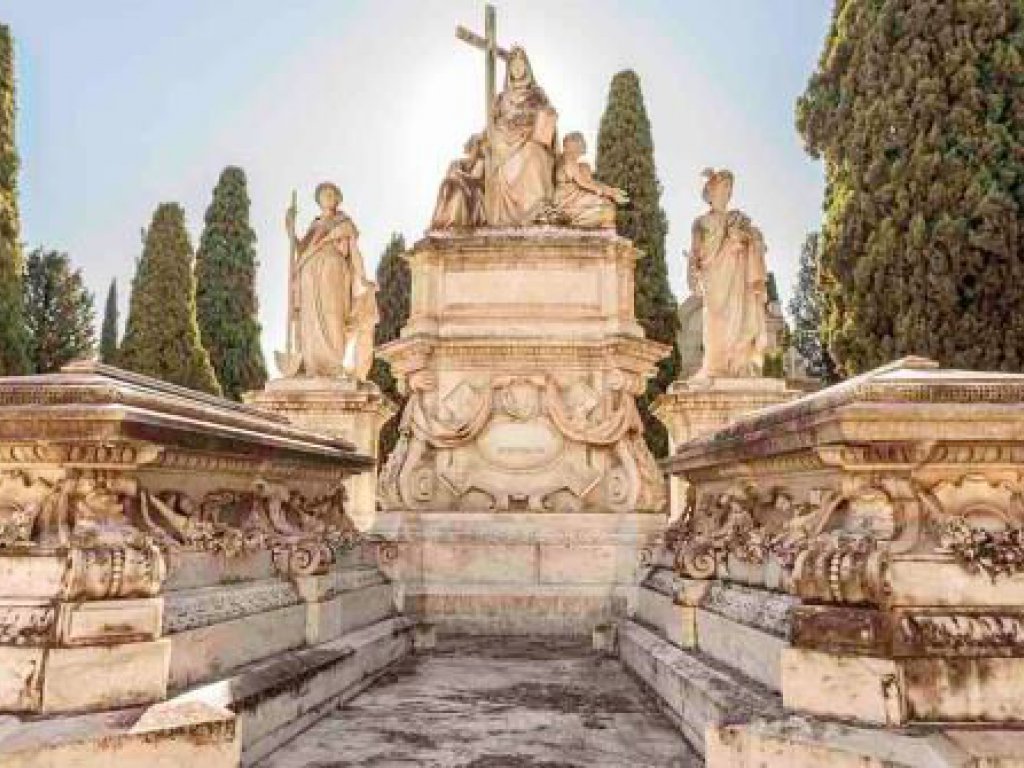
The British Cemetery, a unique graveyard dating back to 1854 and owned by the British Government, which consists of around 600 graves surrounded by lush gardens in the purest English style, is also worthy of mention.
The district is also home to the Community’s largest Roman site, discovered more than two centuries ago. It consists of an extensive chronology from the Carpetanian period (4th to 3rd centuries B.C.) to the present day. Its cultural legacy also includes the area around the Antigua cemetery and the site of the demolished Cárcel Carabanchel Prison, which opened in 1944 and was the only male prison in Madrid for a long time. In 1998, the prison closed its doors after 55 years in operation.
Creative and Bohemian Movement
Nowadays, Carabanchel has become home to a large artistic group of creative young people who have sought an area on the outskirts of the city to develop their work. It hosts more than 130 artists distributed around 40 studios, craft workshops and creative spaces thanks to the ISO industrial estate, where young artists are expressing their creativity in numerous spaces and workshops.
At Nave Oporto, located in the San Isidro neighbourhood, artists like Irma Álvarez-Laviada, Belén, FOD, Santiago Giralda, Miki Leal, Sonia Navarro, Toni Ramón, Manuel Saro and Miguel Ángel Tornero stand out. This space is also home to Mala Fama Estudios which features a group of artists, including Carlos Aires; and Arte&Desmayo, where various artistic dynamics are developed.
They are joined by other creative establishments, such as Hyper House aimed at the emerging digital art scene in Madrid; La Fábrica D Arte, a mural painting academy located in a former textile factory at Number 4, Calle de la Codorniz in the Vista Alegre neighbourhood; the Arte Hélade academy; and the Corner Gallery & Studio, an artistic production studio and exhibition hall.
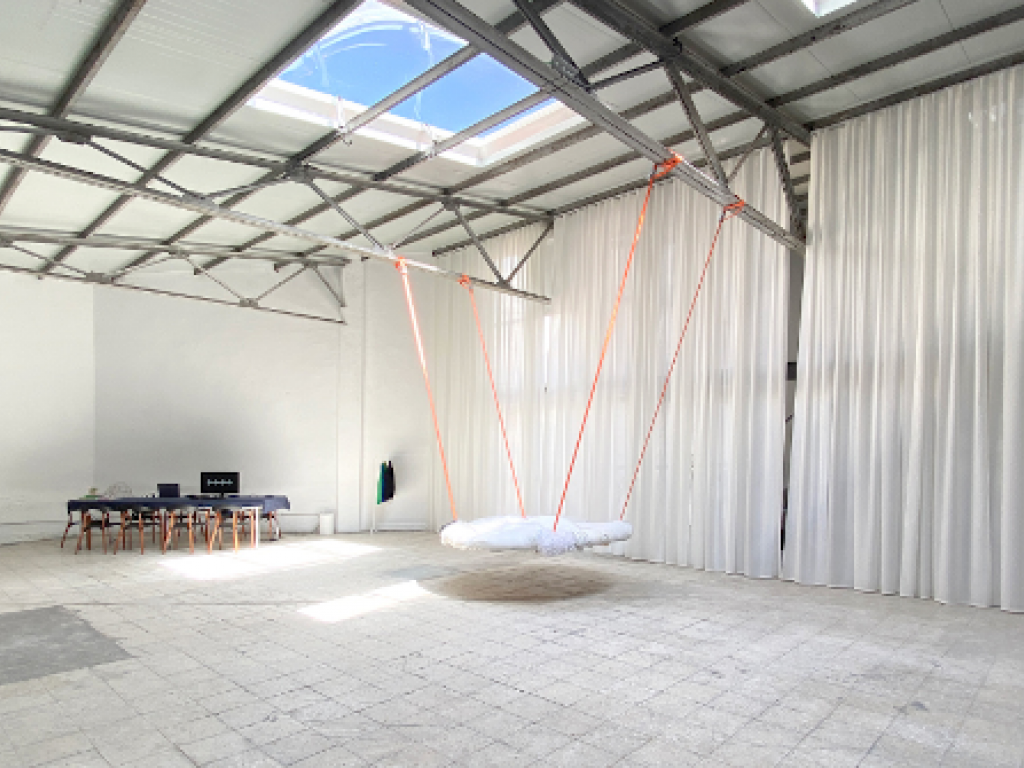
The following galleries stand out: Veta Gallery, the largest contemporary art gallery in Madrid; the Benveniste Contemporary Gallery in the San Isidro neighbourhood; and the Sabrina Amrani Gallery paying special attention to regions of North Africa, the Middle East and South Asia.
The most traditional bars
It is also possible to sample the best and most authentic Madrid tapas in this popular district, as it is home to many establishments with deep-rooted gastronomic traditions.
At Casa de los Minutejos (Antonio Leyva, 19), founded in 1967, it is possible to savour one of the most authentic tapas in Madrid, minutejos, a kind of sandwich filled with sliced pig’s ear and seasoned with a spicy sauce. It is also possible to sample another speciality: roasted pig's ear, which is served with garlic and parsley.
Casa Enriqueta (Calle del General. Ricardos, 19) is an offal classic in the city, which has been maintaining Madrid’s culinary tradition for more than 60 years. Its speciality is chitterlings and tripe.
Cerveceria Gonmar (Paseo de Marcelino Camacho, 47) is in the traditional neighbourhood of Vistalegre, dating back more than 60 years. Its speciality is grilled ear, which is freshly prepared with a crispy and unmistakeable flavour, along with its patatas bravas, with a spicy home-made sauce.
Astral Café (Camino Viejo de Leganés, 82) cafeteria-restaurant has been offering quality food since 1989. Highlights of its menu are pre-roasted suckling pig with the Segovia Guarantee Label, although this is not its only speciality as its scrambled eggs with truffle and home-made croquettes are also worth sampling.
Leisure and entertainment
For those looking to spend some pleasant and relaxing time, take a stroll through San Isidro Park, a large green space which is the second largest in the district of Carabanchel after Emperatriz María de Austria Park. Usually used to host sporting activities, it becomes a fairground in mid-May to host part of the San Isidro festivities.
Islazul a commercial centre offering leisure and high quality shopping in a space with an innovative design that is seductive with its open and natural spaces bathed in light and colour, is also located in the PAU in Carabanchel. Its three floors above ground and two underground floors offer goods for fashion, home, technology and catering, as well as diverse leisure and cultural proposals and services for all ages.
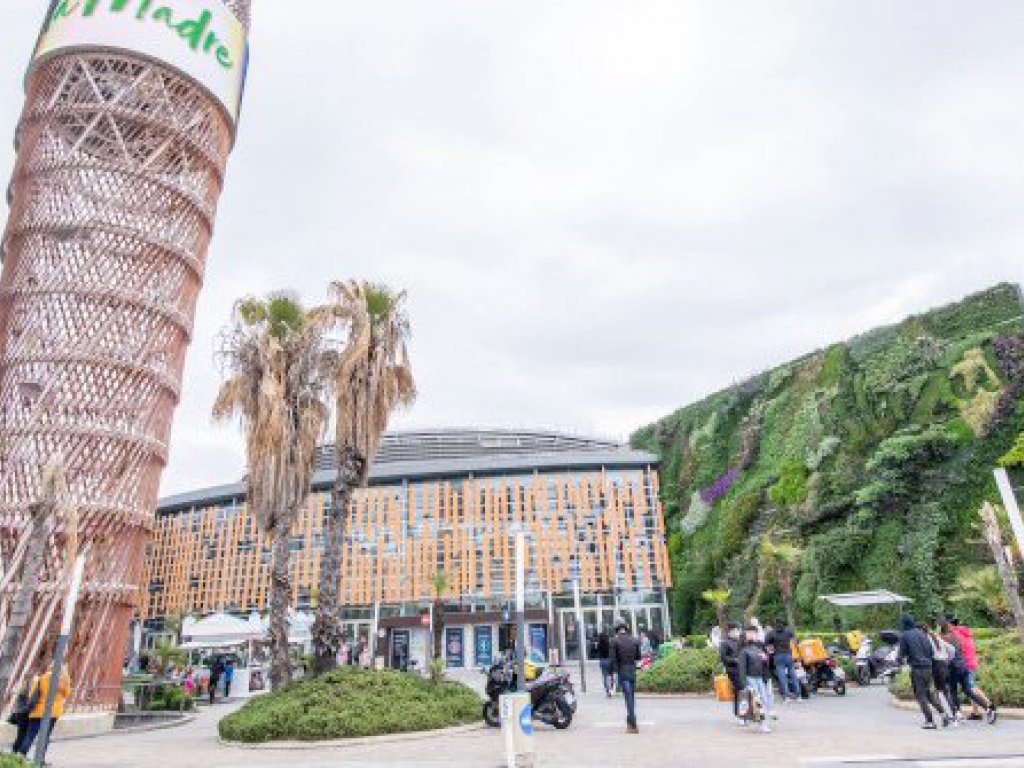
Teatro Tarambana, an alternative theatre with performances for all the family and adults is in Carabanchel. Performances by its resident company, Tarambana Espectáculos, are premièred here and several annual festivals are also held there. Alongside it, TeatroLAB Madrid is an open space for creation, entertainment, research and exhibition of the performing arts, conceived as a theatre for collective art. Fans of music and live performances can visit Gruta 77 and La Sala Live!!.
If you are looking for a thrill, the WINDOBONA Wind Tunnel Madrid offers the experience of flying in the first and only wind tunnel in the city of Madrid. Its facilities spanning 2,000 m2 include a bar-cafeteria and several multi-purpose rooms.
